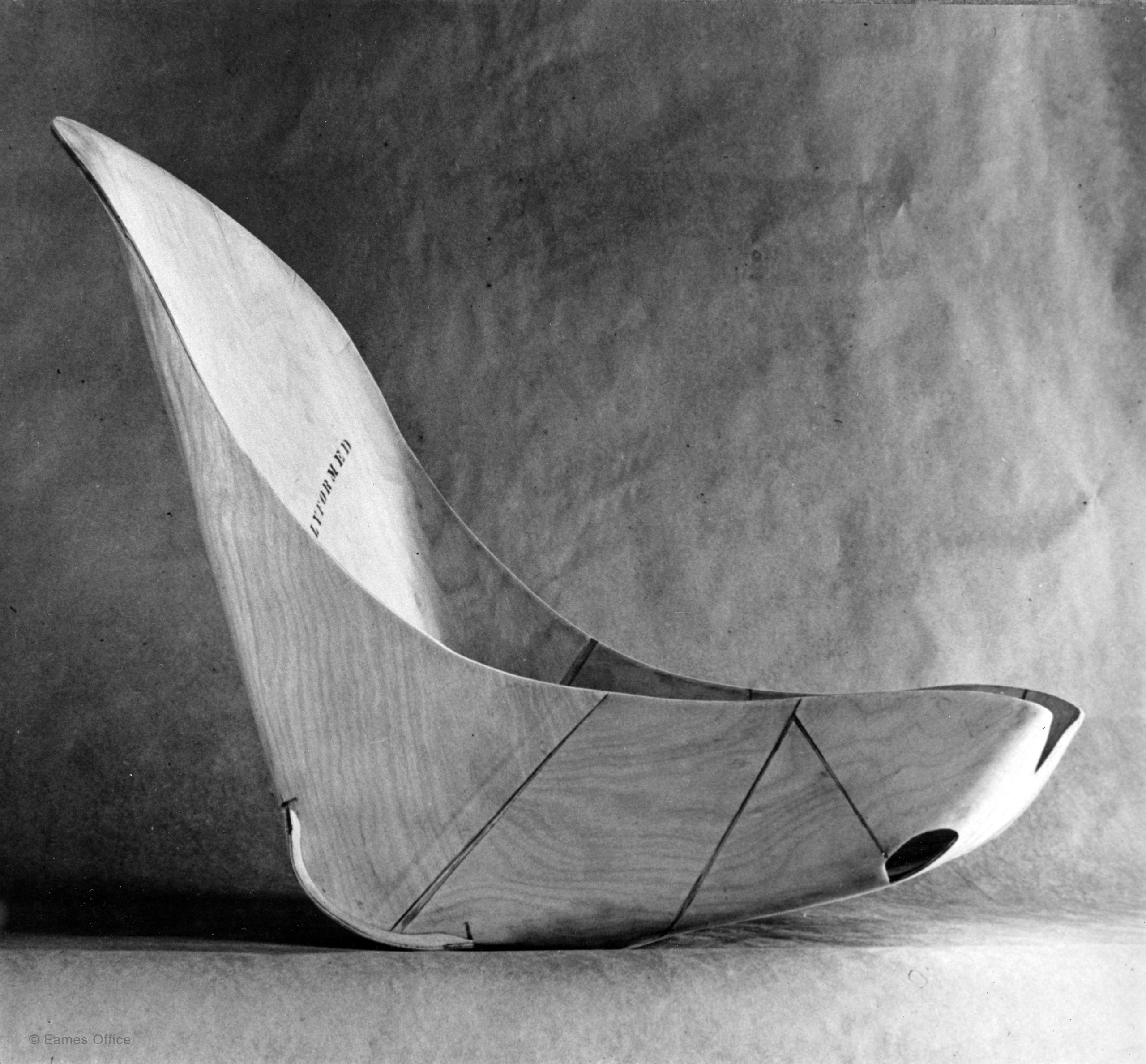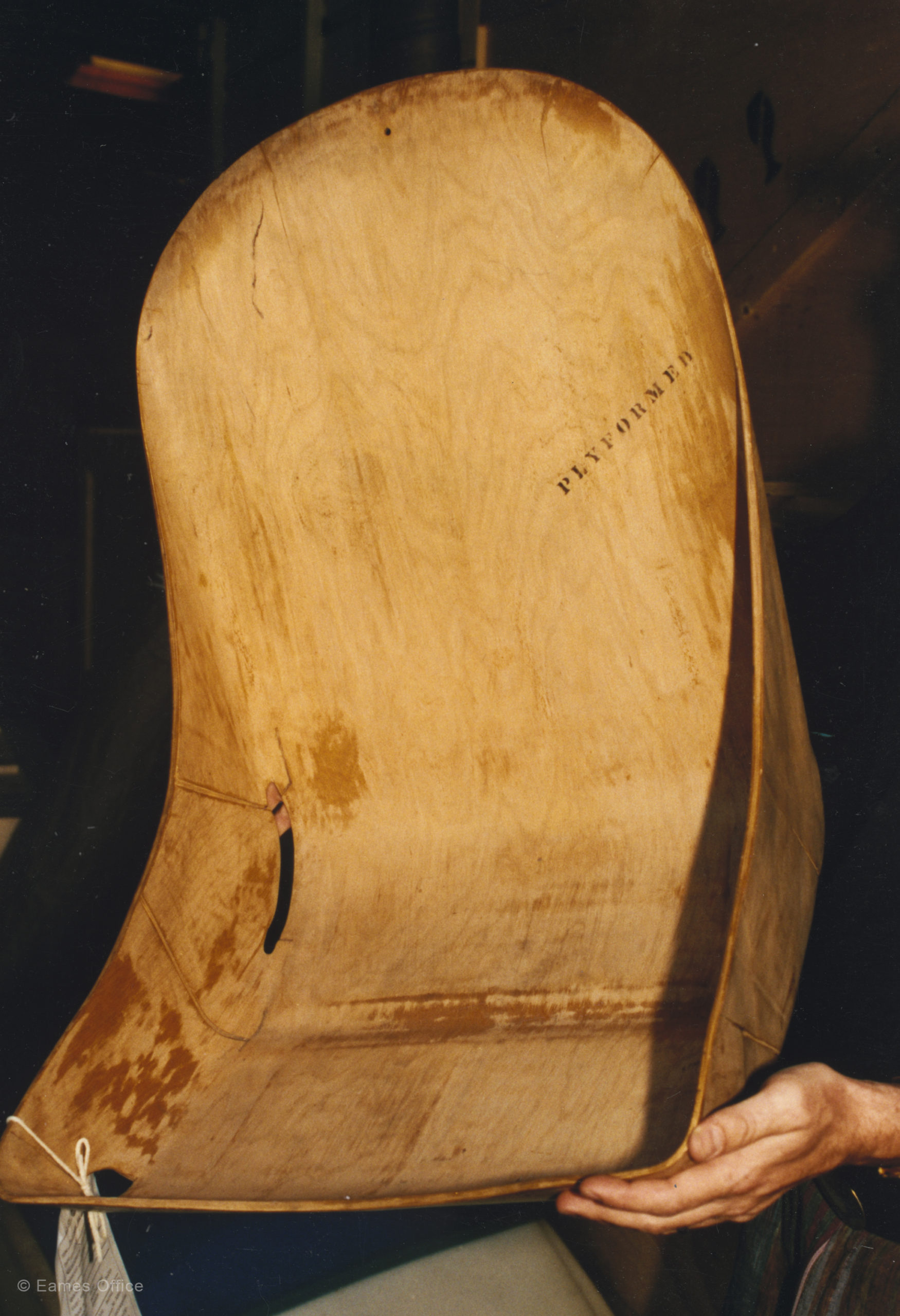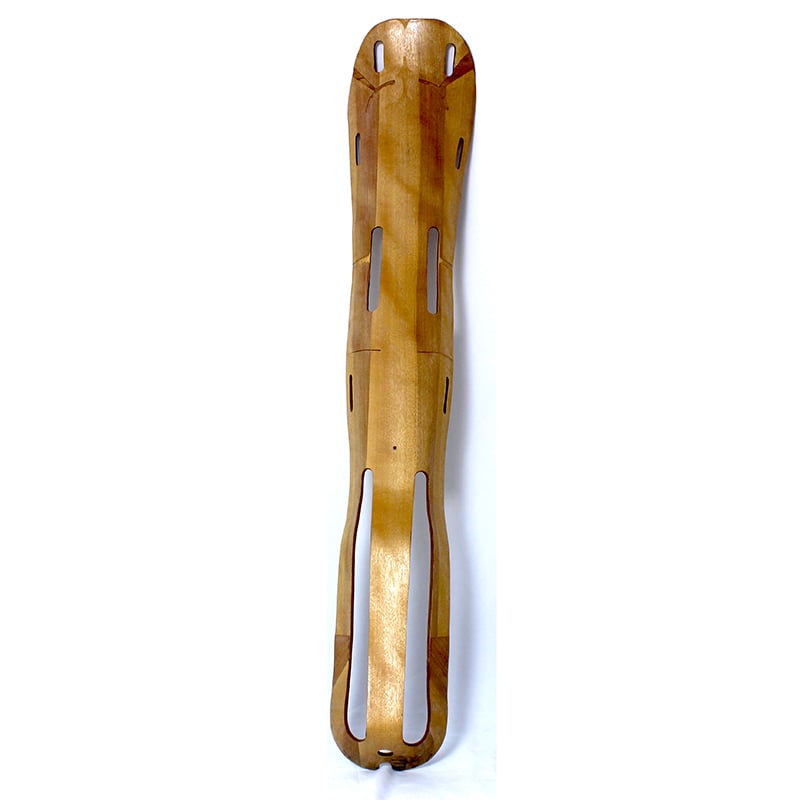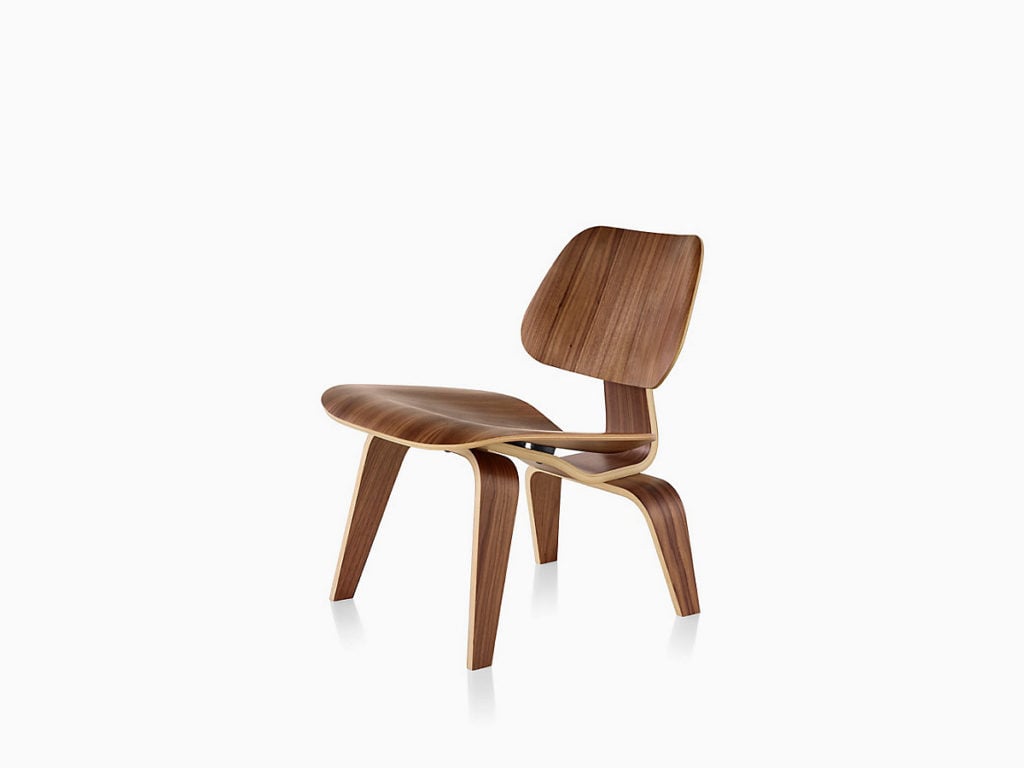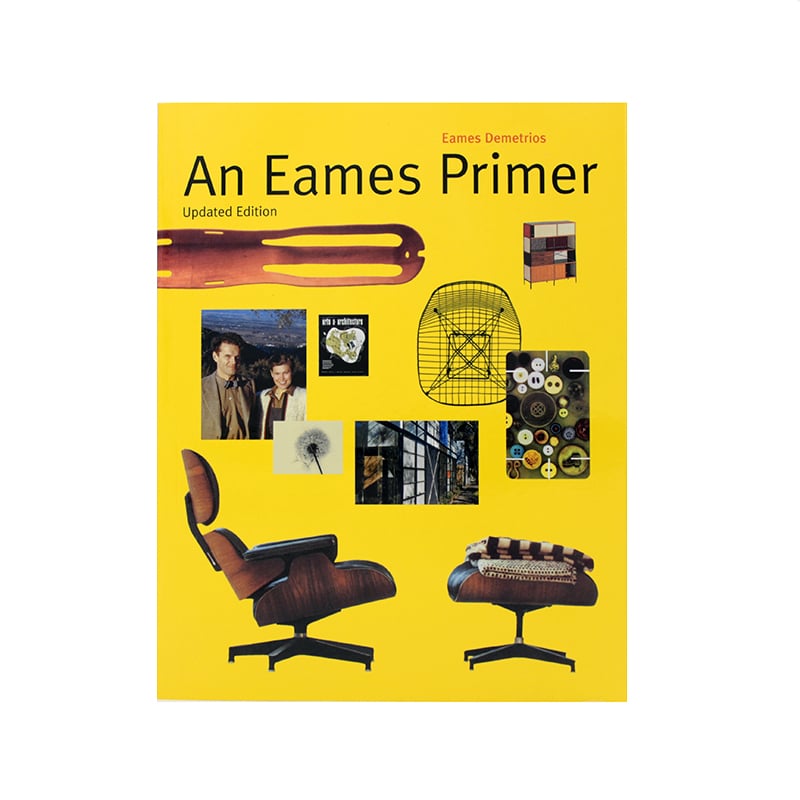Additional Information
The experience Charles and Ray gained from creating the leg splint inspired them to apply their molded-plywood technique to other war-time medical transport devices, such as an arm splint and a body litter. They also employed molded plywood to make an airplane fuselage, airplane stabilizer tail, and other parts for the CG-16 (flying flatcar), including a product for the CG-16 that was a little more familiar to them: The Pilot Seat.
The book, An Eames Primer, asks its readers to look closely at the pilot seat in particular, because “In some ways, it solves the problem of the shell posed by the Organic chair: it is a single-piece plywood shell, but in order to make the material work, it had holes in the corners, and the veneer had to be applied unevenly. You can’t just put a stack of veneers on top of one another and mold them. They must have cuts and other details that make it possible to create the curvature.”
Explore Similar Works
Related Products
Browse a curated selection of Eames Office products we think you’ll love
